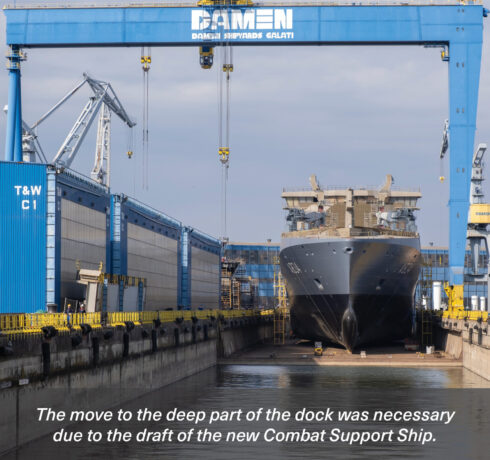Floating a ship seems quite simple: you fill the dry dock with water, the ship floats up and can be moved. In reality, it is an operation that takes more than two days and has more to it than first expected. Because that huge dry dock is not so easy to fill. “The dry dock is big and the door to the dock leaks, so it takes a long time to fill it. Especially at the end, it slows down more and more,” explains Arjan Risseeuw. The Project Director of the Combat Support Ship project, the construction of the new supply ship for the Royal Netherlands Navy, was in Galatz, Romania for the operation and watched on tensely.
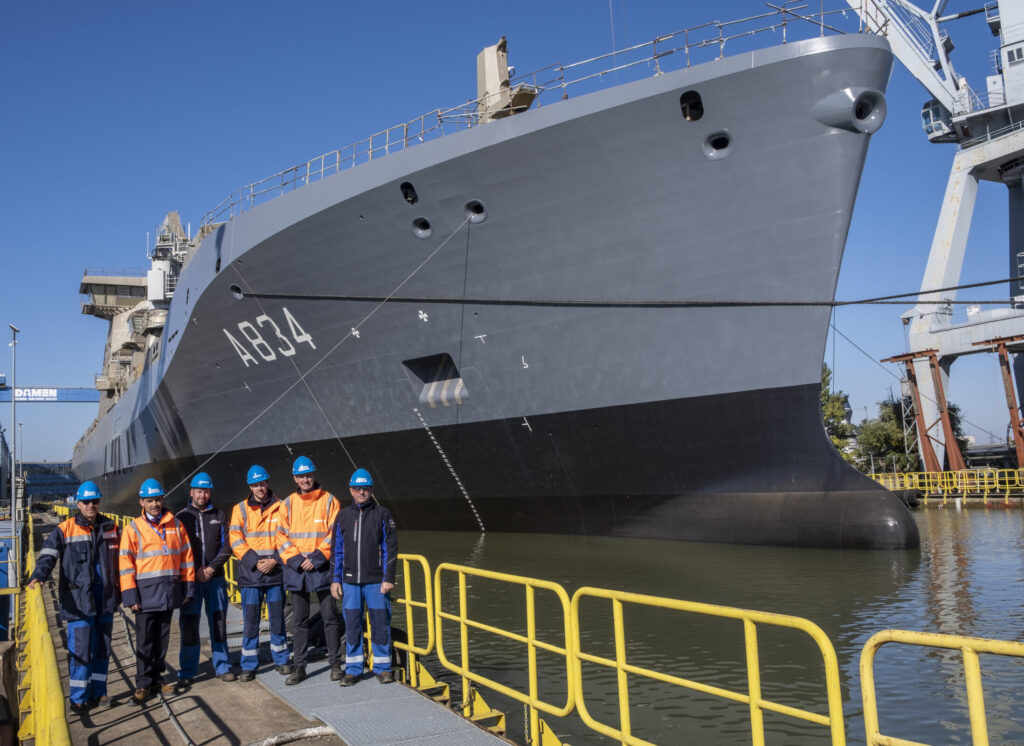 Arjan Risseeuw (second from left) and his team watched on as the ship was moved.
Arjan Risseeuw (second from left) and his team watched on as the ship was moved.
The move to the deep part of the dock was necessary because of the ship’s draft. The dock had to be filled to the maximum so that the ship could be moved just over the threshold to the deep part of the dock. There, the last blocks of module 6 can be placed. The bridge section has already been positioned. This had to be done prior to moving the ship to the deeper part of the dock, because the large crane because the large crane needed to place the superstructure does not reach as far forward as that. It can, however, reach the rest of superstructure is still accessible.
Filling the dock was not the only challenge during this project milestone. The wind also had to be taken into account so that the brand new vessel would not be damaged against the dock walls. The CSS was attached to two cables that spanned the entire length of the dock. “Because of the wind, one cable was continuously taut, while the other was used to ‘steer’ the ship a bit,” Arjan explains. “This was difficult, especially at the beginning, because the cables were so long that there was almost no angle to really steer the ship.”
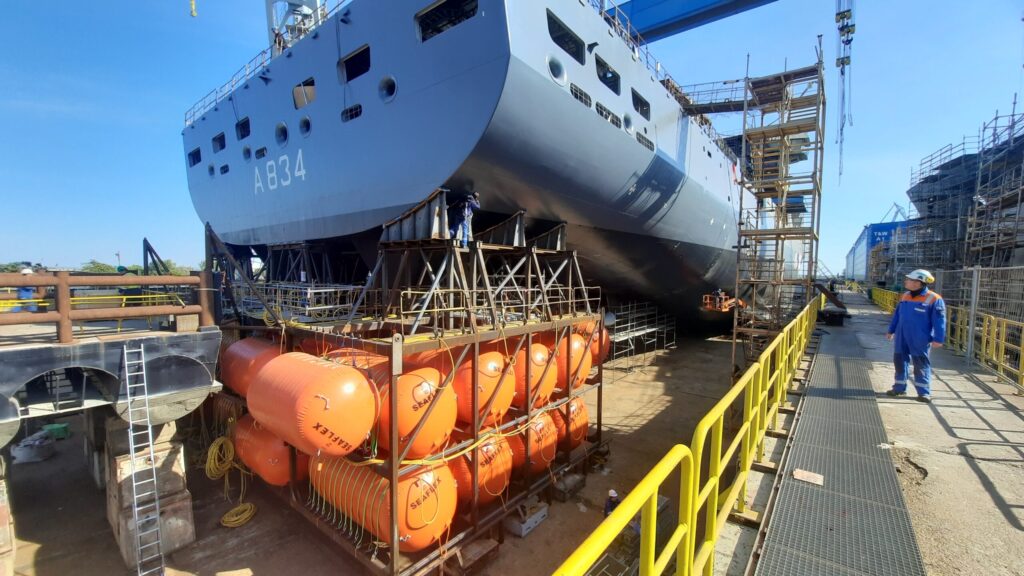 The floatation device provided the stern with more buoyancy.
The floatation device provided the stern with more buoyancy.
The biggest challenge, however, was in the floatation device. This metal frame filled with air pockets provided the stern with more buoyancy so that the ship could be moved with ‘even keel’. The floatation device had been designed and built specifically for this project and operation, and although the computer simulations showed it would work, the reality was still exciting. “The operation did not go as smoothly as we had hoped beforehand, but in the end the floatation device did its job and the ship could be moved with even keel,” Arjan adds. “It was a huge operation to place the floatation device and also to remove it again the following days, but it did its job and the ship is now in the deep part of the dock.”
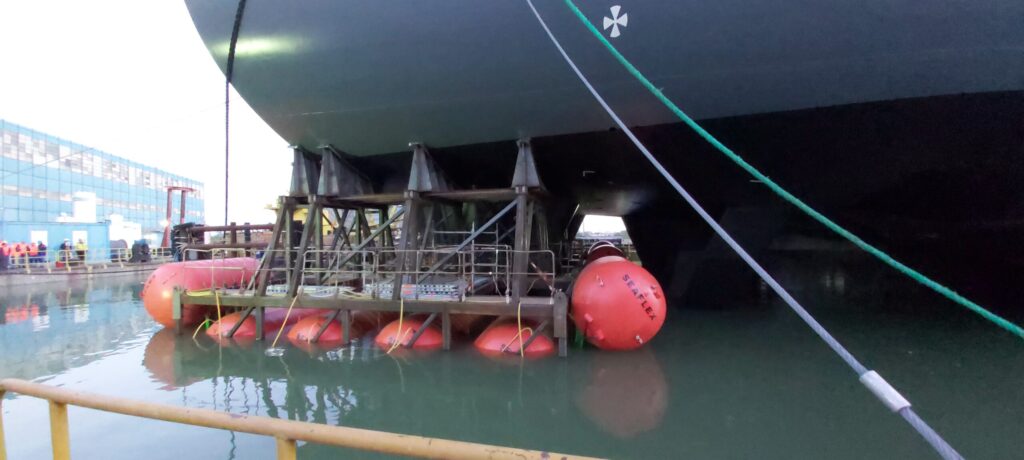 By using the floatation device, the ship could be moved with ‘even keel’.
By using the floatation device, the ship could be moved with ‘even keel’.
Meanwhile, the big crane is already hard at work placing the remaining blocks. “These were built elsewhere in the yard last year and are now on the quayside ready to be put on board,” Arjan explains. “The first part, the lower superblock, directly behind the bridge, has recently been placed. Now we will continue to prepare the superstructure up to the mast.” That work is expected to be completed in February. In March 2023, the vessel will be moved again, this time to the quayside, and then commissioning will begin in April 2023. In early 2024, the ship will go on trials and in June 2024, the ship will be handed over to the Defence Materiel Organisation.
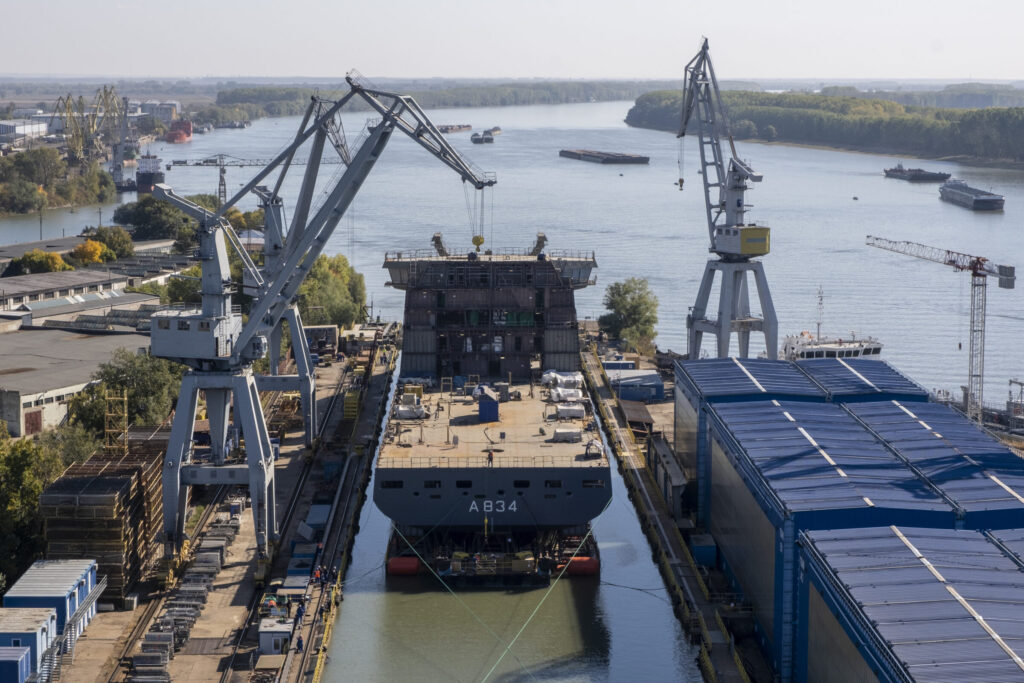 In early 2024, the ship will go on trials and in June 2024, the ship will be handed over to the Defence Materiel Organisation.
In early 2024, the ship will go on trials and in June 2024, the ship will be handed over to the Defence Materiel Organisation.

